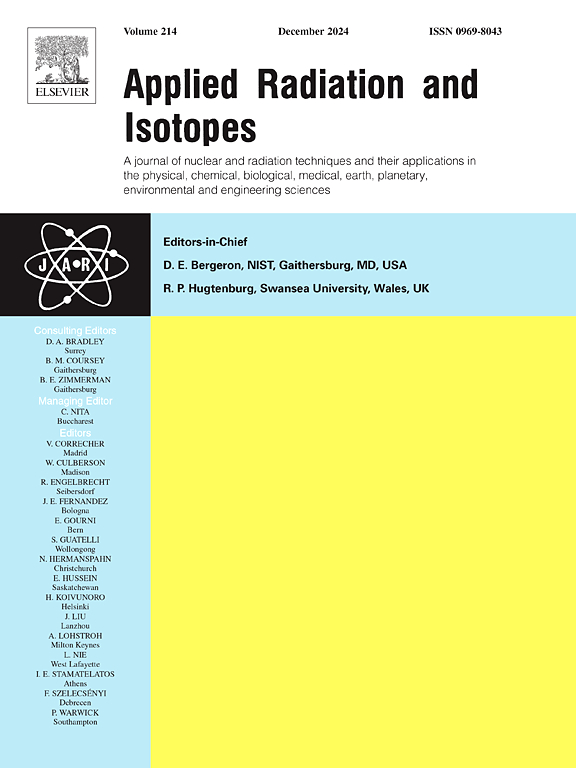Development of a twin Frisch-grid ionization chamber for correlated fission fragments studies
IF 1.6
3区 工程技术
Q3 CHEMISTRY, INORGANIC & NUCLEAR
引用次数: 0
Abstract
A Twin Frisch-Grid Ionization Chamber (TFGIC) for the measurement of correlated fission fragments has been built in the Institute of Nuclear Physics and Chemistry (INPC). The design and performance testing, as well as data analysis of fission experiments, have been described in this paper. The results of performance testing experiment with a compound alpha source of 241,243Am showed that the ratio of the electric field between the drift region and collection region should be greater than a critical value. Meanwhile, the correction of grid inefficiency (GI) and the reconstruction of emission angle were investigated in detail. These experimental results provided a solid foundation for fission experiments. Two fission experiments of 235U have been carried out both at the Chinese Mianyang research reactor (CMRR) and neutron science facility in INPC to validate the feasibility of this setup used for investigating fission. The results showed that the angular resolution achieved 12.6%, and the mass resolution was about 5 atom mass unit (AMU). Moreover, the total kinetic energy (TKE) of fission fragments for both fission experiments agreed well with those in the literature. These primary results indicated the detector could be well applied in the subsequent fission investigation.
求助全文
约1分钟内获得全文
求助全文
来源期刊

Applied Radiation and Isotopes
工程技术-核科学技术
CiteScore
3.00
自引率
12.50%
发文量
406
审稿时长
13.5 months
期刊介绍:
Applied Radiation and Isotopes provides a high quality medium for the publication of substantial, original and scientific and technological papers on the development and peaceful application of nuclear, radiation and radionuclide techniques in chemistry, physics, biochemistry, biology, medicine, security, engineering and in the earth, planetary and environmental sciences, all including dosimetry. Nuclear techniques are defined in the broadest sense and both experimental and theoretical papers are welcome. They include the development and use of α- and β-particles, X-rays and γ-rays, neutrons and other nuclear particles and radiations from all sources, including radionuclides, synchrotron sources, cyclotrons and reactors and from the natural environment.
The journal aims to publish papers with significance to an international audience, containing substantial novelty and scientific impact. The Editors reserve the rights to reject, with or without external review, papers that do not meet these criteria.
Papers dealing with radiation processing, i.e., where radiation is used to bring about a biological, chemical or physical change in a material, should be directed to our sister journal Radiation Physics and Chemistry.
 求助内容:
求助内容: 应助结果提醒方式:
应助结果提醒方式:


